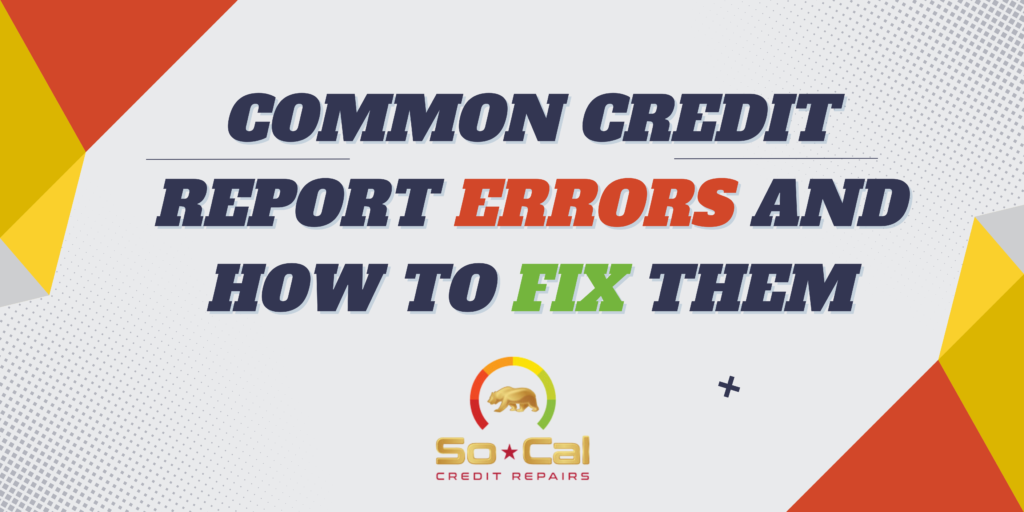Your credit report is like the report card of your financial life, and just like in school, mistakes happen. But unlike a bad grade in gym class, errors on your credit report can have serious consequences. Fortunately, these errors can be fixed—but first, you have to know what to look for. Let’s break down some common credit report errors, how they sneak into your report, and most importantly, how to boot them out.
1-Identity Errors: When You’re Mistaken for Someone Else
One of the most common credit report errors occurs when someone else’s information gets mixed up with yours. This can happen if you share a similar name with someone, or if a Social Security number gets mistyped.
How to Fix It:
- Step 1: Request a copy of your credit report from all three major bureaus: Equifax, Experian, and TransUnion. You’re entitled to one free report each year from each bureau at.
- Step 2: Identify the erroneous information—whether it’s a wrong name, address, or an account you don’t recognize.
- Step 3: File a dispute with each bureau that reports the error. Include copies of documents that support your claim, like identification or account statements.
2-Incorrect Account Status: When Your Accounts Get Confused
Another common error is when an account is inaccurately reported. Maybe an account you’ve paid off is still listed as active, or an open account is incorrectly marked as closed. These mix-ups can impact your credit score.
How to Fix It:
- Step 1: Review your credit report carefully for inaccuracies regarding your account statuses.
- Step 2: Contact the creditor directly to ensure they’ve reported the correct information to the bureaus.
- Step 3: If the creditor confirms the error, dispute it with the credit bureaus, providing any proof of your account status.
3-Data Management Errors: When Outdated or Duplicitous Info Lingers
Sometimes, a single account might appear twice, or outdated information remains on your report past its expiration date (e.g., a debt that should’ve been removed after seven years). These errors can make you look more indebted than you are.
How to Fix It:
- Step 1: Look for any duplicated accounts or outdated entries on your credit report.
- Step 2: Note the original dates and compare them with current entries.
- Step 3: Dispute the outdated or duplicated information with the credit bureaus, providing evidence like the original loan agreement or payment records.
4-Balance and Credit Limit Errors: When the Numbers Don’t Add Up
Your credit utilization ratio—a key factor in your credit score—depends on the accuracy of your balances and credit limits. If a creditor reports the wrong balance or credit limit, it can skew this ratio and hurt your score.
How to Fix it
- Step 1: Verify that your reported balances and credit limits match your records.
- Step 2: If you find discrepancies, contact the creditor to correct the information.
- Step 3: Dispute the incorrect details with the credit bureaus if the creditor doesn’t resolve the issue.
5-Reinserting Corrected Errors: The Ghosts of Errors Past
In some cases, an error that was previously fixed reappears on your credit report. This can happen if a debt collector resubmits information without verifying its accuracy, a practice that’s unfortunately more common than you might think.
How to Fix It:
- Step 1: Keep records of all your disputes and the documentation you provided.
- Step 2: If an error resurfaces, send the credit bureaus copies of the original dispute resolution.
- Step 3: Request that the reinsertion be removed and that the credit bureau provide you with a statement confirming the correction.
Conclusion: Stay Vigilant and Act Fast
Credit report errors are more common than you might expect, but they don’t have to stick around. By regularly checking your reports, knowing what to look for, and taking swift action to correct any mistakes, you can keep your credit score in top shape.
Remember, your credit report is a key component of your financial health, so treat it like you would your physical health: with regular check-ups and immediate care when something seems off. And if things get complicated, don’t hesitate to reach out to a professional—sometimes, a little expert help can go a long way.
So, next time you review your credit report, approach it like a detective on a case. Because when it comes to your credit, it’s better to be safe than sorry—or worse, mistaken for someone else!


